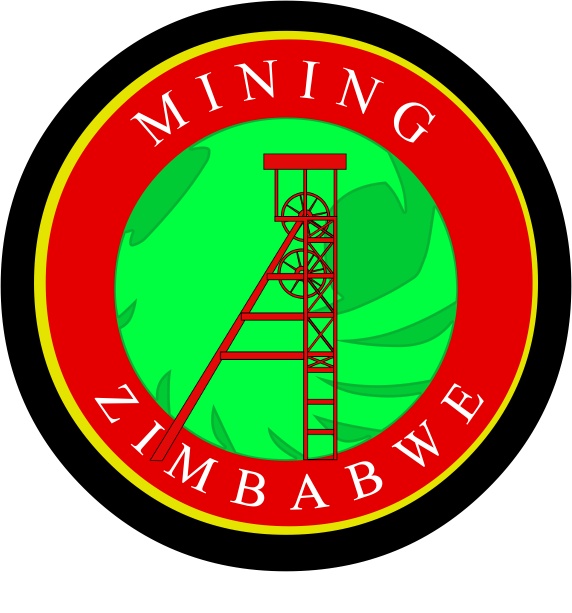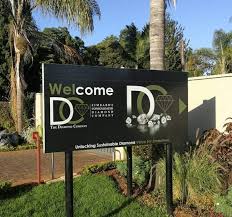Roughly two weeks ago, I received a WhatsApp message from the Zimbabwe Consolidated Diamond Company (ZCDC)’s Head of Public Relations and Community Development. “True to your advice, we have put annual reports and other documents on website for transparency. You can check.”
By Mukasiri Sibanda
Firmly, this conversation is rooted in my previous work with the Zimbabwe Environmental Law Association (ZELA), where we sought to strengthen transparency and accountability in the governance of the mines and minerals sector in Zimbabwe. Given that opacity is almost synonymous with Marange diamond mining operations, relentlessly, ZELA engaged with ZCDC, Minerals Marketing Corporation of Zimbabwe (MMCZ), government and Parliament to improve transparency in the diamond sector.
ZCDC is a State-Owned Enterprise (SOE), wholly owned by the government of Zimbabwe through the Zimbabwe Mining and Development Corporation (ZMDC). Formed in March 2015, the government’s main drive for establishing ZCDC “was to ensure that there would be transparency, accountability and optimal commercial exploitation and marketing of Zimbabwe’s diamonds that would benefit ordinary Zimbabweans.” An objective that jibes with the African Mining Vision (AMV) which envisages “Transparent, equitable and optimal exploitation of mineral resources to underpin broad-based sustainable growth and socio-economic development”
Why disclosure is key
According to Natural Resource Governance Institute (NRGI)’s Guide to Extractive Sector State-Owned Enterprises Disclosures, “transparency, driven by enhanced disclosures, constitutes a major component of an SOE’s accountability to shareholders, potential investors and business partners, and an increasingly engaged civil society.”
At the behest of the International Monitoring Fund (IMF)’s Staff Monitored Programme, the only audited annual reports which extensively covered the diamond sector were publicly released in 2013, comprising of 2011 and 2012 annual reports. So, considering the seven-year information drought on audited annual reports, the disclosure by ZCDC in 2020 comes as a huge relief. Also important to note is that, this time around, it was civil society organisations (CSOs) that influenced ZCDC to disclose and not IMF.
Perhaps this is indicative of the fact that local CSOs are quite relevant to the agenda of strengthening transparency and accountability of Zimbabwe’s extractive sector.
The term “extractive sector” is used generally to refer to oil, gas and mineral sector. Using narrative reports generated by OAG, CSOs like ZELA, in previous years, had lambasted ZCDC for failing a transparency test.
As the government stumbles on adoption and implementation of the Extractive Industries Transparency Initiative (EITI), a globally recognized standard on promoting openness and accountability in the extractive sector, it is crucial, therefore, for CSOs to unbundle the push for transparency. Small victories such as this one on disclosure of annual reports by ZCDC are needed energizes the struggle for transparency. It must be noted though, the Office of the Auditor General (OAG) had been consistently sharing only narrative reports on governance challenges besetting State participation in the diamond sector.
Whilst the disclosure by ZCDC is laudable, it must be highlighted, ZCDC’s peer, MMCZ publicly releases its audited annual reports on regular basis. Equally so, OAG had been consistently sharing information on state participation in the diamond sector.
This evinces, therefore, that ZCDC had been lagging compared to its peers on transparency. Considering that ZCDC is owned by ZMDC, a SOE which lacks a culture of disclosure, will the entity breakaway from opaqueness and consistently disclose publicly its annual reports.

After complying with IMF’s SMP in 2013, ZCDC ceased to disclose publicly its annual reports in the preceding years. Now that ZCDC has heeded that call by CSOs to disclose, will this be part of the new culture by ZCDC. Only time will tell, however. But what is clear is that CSOs must no rest in their laurels, constant pressure is needed to ensure that mining SOEs like ZCDC embrace a culture of disclosure.
Another huge minus on ZCDC’s disclosure is that the information is stale. Only audited annual reports for 2016, 2017 and 2018 were released. Up to date information on ZCDC’s 2019 audited annual reports is still not publicly available. Clearly, ZCDC is flouting the constitutional basic values and principles governing public administration, particularly, Section 194 (1) (h), which says “transparency must be fostered by providing the public with timely, accessible and accurate information.”
Revealed: Revenue leakages and illicit financial flows
Claims of US$15 billion missing from Marange diamond mining operations, made by the former and late President Robert Mugabe, the diamond sector is a harbinger for corruption and illicit financial flows (IFFs) prejudicing resources for investment in essential services and infrastructure. IFFs are defined as money that is illegally earned, transferred and spent by the Global Financial Integrity.
The Report of the High Level Panel on IFFs from Africa cautioned that African countries that heavily depend on extraction of natural resources for their exports and tax revenue, as the case with Zimbabwe, are prone to IFFs. Such IFFs occur through “transfer mispricing, secret and poorly negotiated contracts, overly generous tax incentives and under-invoicing.”
The report’s findings chimes with highlights from ZCDC’s annual reports on sources and enablers for diamond revenue leakages such as “Lack of adequate skills and capacity in sorting and valuation also contributed to loss of value through undervaluation. An inadequate marketing framework further exacerbated the value loss as it failed to attract a diversified pool of international buyers to participate at local diamond auctions. Resultantly the country was losing significant value due to inefficiencies in cleaning, sorting, valuation and marketing of diamonds.”
To help curb diamond revenue leakages and IFFs, “ZCDC acquired a Diamond Processing and Deep boiling facility with modern technology and appropriate intellectual property to facilitate the cleaning of Zimbabwean diamonds which had been undervalued due to poor cleaning.”

To back this assertion, a comparative analysis of the average rough diamond price per carat for annual diamond sales conducted by ZCDC shot to US$62.27 in 2018 from US$49.69 earned in 2017, a 25.33% increase in value. It is important though to note that, according to Kimberly Process (KP)’s public statistics, average price of rough diamonds per carat rose from US$110.13 in 2017 to US$116.78 in 2018, a 6.04% increase in value.
At a minimum, this helps to show that ZCDC’s interventions have improved the average price of rough diamond sales.
Is ZCDC fulfilling its mandate?
There are five anchors of ZCDC’s mandate that consists of; (i) to enhance adequate investment in diamond mining beyond alluvial, (ii) to explore for kimberlitic resources and build bankable mining reserves, (iii) to enhance contribution to the fiscus and community development (iv) to enable Government to more efficiently manage operations and exploitation of the country’s diamond resources; (v) to achieve better accountability and transparency.
A quick evaluation of how ZCDC has fulfilled its own mandate a fundamental exercise of stimulating citizen participation and accountability in the diamond sector. Notably, CSOs working with Community Based Organisations, mining companies and relevant government institutions organized multi-stakeholder engagement platforms branded as alternative mining indabas (AMIs) at district, provincial and national levels.
For Mutare district AMI, community evaluation of ZCDC’s mandate, fundamentally, must be one of the topical issues for engagement.
“ANJIN’S RETURN POINTS TO ZCDC’S FAILURE TO ATTRACT RESPONSIBLE INVESTMENT”
Beyond alluvial
In its annual reports, ZCDC reveals that the company has managed to successfully transition from alluvial diamond mining to conglomerate diamond mining. Diamonds are expected to contribute at least US$1 billion annually by 2023, according to government’s target of annual earnings of US$12 billion by 2023.
Although not included in the annual reports, Anjin Investments and Alrosa have come in “to work with ZCDC to boost diamond exploration and production.” In 2018, ZCDC produced 2,766,576 carats, a far cry from 12,060,162.7 produced in 2012 earning $740,998,085.16 according to KP’s rough diamond pubic statics.
“ZCDC MUST DISCLOSE CONTRACTS WITH ANJIN AND ALROSA FOR PUBLIC SCRUTINY”
This was the peak period of Zimbabwe’s rough diamond production. ZCDC’s 2018 rough diamond production figures show that the entity has a mountain to climb if it is to help with the attainment of the US$1 billion annual earnings from diamonds by 2023.
The return of Anjin Investments, partly owned by the Chinese and the military, points to a failure by ZCDC to attract responsible investment in the diamond sector. Along with the other seven companies that were mining diamonds in Marange, Anjin Investment was given the boot in 2016 for being part of the opaque management of diamonds and huge revenue leakages.
Considering that ZELA was on the ground in March 2018, where it witnessed that Anjin Investment was active, it is amiss that ZCDC in its 2018 annual report failed to report on Anjin Investment’s activities. To gain more insights on Anjin Investment’s rogue past in Marange, read Mukasiri Sibanda’s opinion piece, The return of Anjin to Marange, the blindside of “Zimbabwe is open for business” agenda, published by newZWire on 10 February, 2019.
It is pertinent for ZCDC to disclose contracts the company entered into with Anjin as well as Alrosa for publicly scrutiny if ZCDC is to fulfill its mandate on delivering better transparency and accountability in the diamond sector.
Contribution to Treasury and community
There was no disclosure of various payments made to the government by ZCDC. It is important for ZCDC to publicly disclose payments of taxes, charges and levies paid like royalties, local taxes to Mutare RDC, and levies paid to Ministry of Mines and Mining Development (MMMD), for example. Such levels of transparency are quite critical given the legacy issues around failure by the previous miners to pay a fair share of taxes to government.
ZCDC’s 2017 annual reported noted that “the known rich alluvial deposits had been mined out and the remaining alluvial deposits were largely uneconomic for mechanised mining”, according to its former CEO M Mpofu.
There is an opportunity for ZCDC to allow artisanal diamond mining in Marange as encouraged by AMV and the Kimberly Process through the Washington Declaration on Integrating Development of Artisanal and Small Scale Diamond Mining with Kimberly Process Implementation. Artisanal mining is hymned by the AMV because of its ability to create employment since it is lowly mechanised and highly labour intensive. If well managed artisanal diamond mining can balloon the community spend, enhance community enterprise development, and mitigate violent conflicts which tarnish Zimbabwe’s diamonds on the international market. If ZCDC seriously seeks to enhance community development, artisanal diamond mining must be a top agenda item.
Whilst it commendable that unlike its predecessors, ZCDC paid “US$5 million” to Marange-Zimunya Community Share Ownership Trust (CSOT), the net effect is that ZCDC acted no differently from its duplicitous predecessors who failed to honour their commitments on community development. Due to the country’s currency woes, the payment was accounted for as local currency and this heavily eroded the value of the fund.
Disclosures good, but not enough
ZCDC must be commended for releasing its annual reports for publicly scrutiny which augurs well with its mandate to deliver better transparency and accountability in the diamond sector. Similarly, efforts by ZCDC to curb diamond revenue leakages through improved sorting and valuation of diamonds are quite commendable. Average rough diamond price per carat rose by 25.33% in 2018 compared to 2017, all thanks to efforts made by ZCDC.
However, there are areas for improvement.
ZCDC must ensure to share timely, accessible and accurate information as required by the Constitution. From its peers like MMCZ, ZCDC must take a leaf and consistently share publicly its annual reports.
Government might be stumbling on joining EITI, however, CSOs must take heart that there are important small victories that are needed to improve the mining transparency landscape. To move the needle on delivering transparency in the diamond sector, ZCDC must disclose joint venture contracts with Anjin Investment and Alrosa.
On community development, it is vital for ZCDC to support artisanal diamond mining. This will also go a long way to remove the bad publicity around Marange diamonds because of recurring violent conflicts between the company’s security and artisanal miners.
First Published on NewZwire




